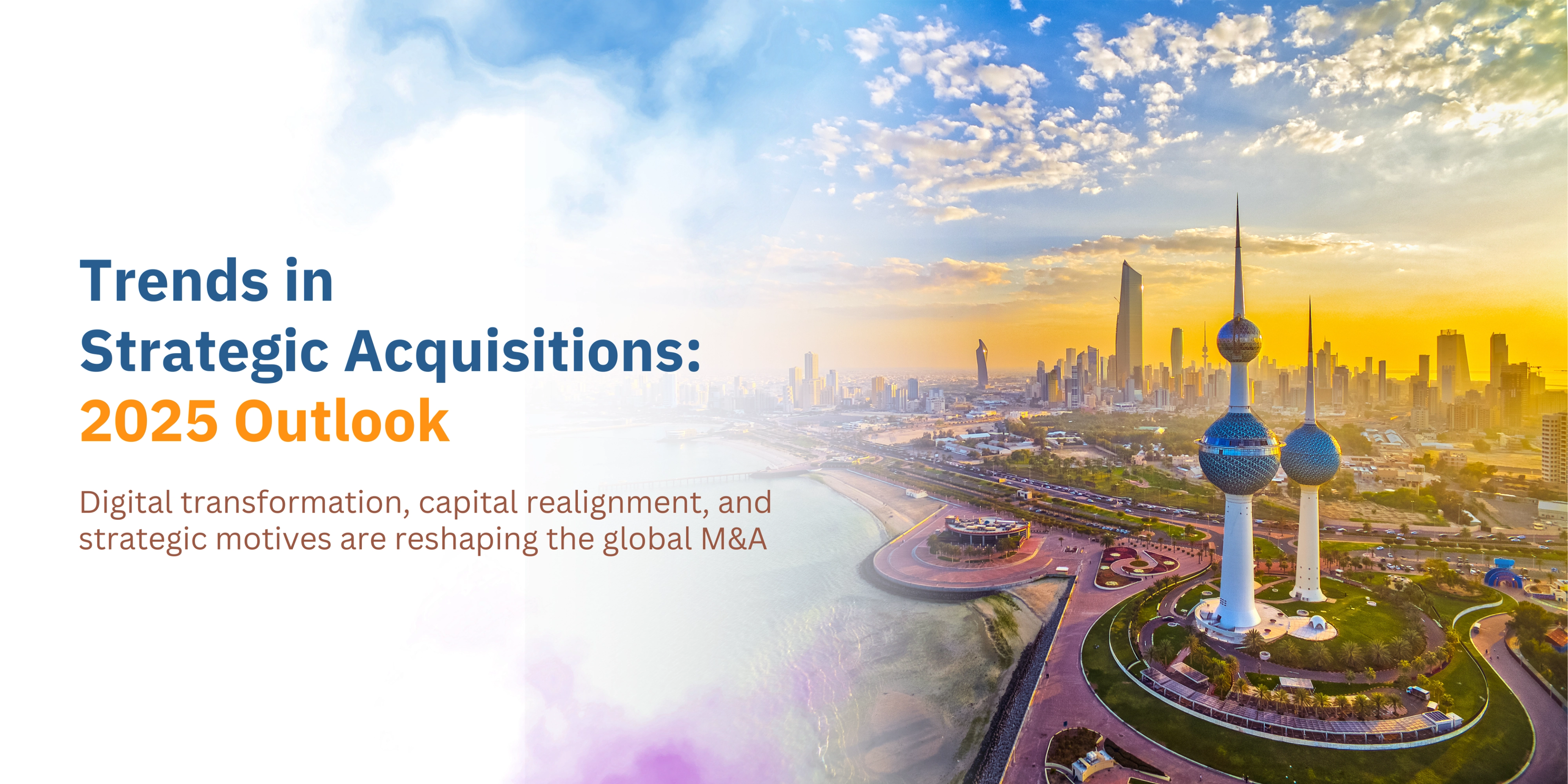Mergers and acquisitions (M&A) in 2025 have evolved into a more strategic, data-driven, and purpose-led exercise. The year’s activity reflects not only cyclical capital flows but a deeper structural change in how organizations define growth, synergy, and resilience.
As industries recalibrate to post-transformation realities, strategic acquisitions have emerged as the central vehicle for accelerating innovation and long-term value creation (PwC, 2025).
The New Landscape of Strategic M&A
Global M&A volumes remain steady, but deal composition is shifting. According to J.P. Morgan (2025), companies are now prioritizing acquisitions that enhance capability ecosystems rather than simply expanding market share.
This trend highlights a growing preference for:
- Vertical integrations that strengthen value chain control.
- Digital capability buys that reinforce long-term competitiveness.
- AI-powered diligence processes that improve risk transparency.
Firms are moving beyond traditional valuation models to incorporate strategic intent, a shift also noted in Bain & Company’s M&A Report 2025, where data intelligence and cultural compatibility now weigh as heavily as financial synergies.
The Digital and Data-Driven Imperative
Digital transformation continues to define the DNA of successful M&A. AI and automation are driving precision across the deal cycle, from target screening and valuation modeling to integration and performance tracking. The rise of data-driven decisioning allows acquirers to map value levers faster and minimize post-deal surprises (Goldman Sachs, 2025).
At the same time, organizations are leaning on advanced analytics to quantify intangibles, such as IP value, innovation potential, and ESG performance. This evolution reflects a larger theme of intelligence-driven capital deployment, where precision replaces perception as the foundation of deal success.
The Human Capital Factor: Rewriting the Integration Narrative
Strategic acquisitions increasingly hinge on people alignment. As AI disrupts traditional business models, acquirers are reassessing workforce strategy, leadership compatibility, and post-merger cultural cohesion (EY, 2025).
According to IJSREM (2025), the human resource function is now central to deal execution, moving from administrative oversight to strategic enabler. Meanwhile, Emerald Insight (2025) suggests that AI-powered HR systems are enhancing talent mapping and post-deal retention, ensuring that workforce synergies translate into real performance gains.
Regional Insights: India’s Expanding M&A Momentum
In India, M&A deal flow remains robust despite valuation headwinds. EY (2025) highlights that digital transformation, manufacturing expansion, and private equity-backed buyouts continue to fuel deal activity. Domestic conglomerates are seeking cross-border partnerships to scale technology and sustainability capabilities.
However, the key differentiator is intent.
Indian firms are approaching acquisitions not as transactions, but as strategic transformations, a mindset shift that aligns with the broader global pivot toward resilient, knowledge-led growth (GrowthPal, 2025).
The Return of Strategic Clarity
As global markets regain stability, executives are rediscovering the value of focus. Deloitte (2025) observes that buyers are now more selective, prioritizing deals with long-term strategic logic over opportunistic scaling.
This is particularly evident in:
- Portfolio realignments to shed non-core assets.
- Capability-driven mergers focused on innovation and sustainability.
- Cross-sector collaborations between tech and traditional industries.
These trends underscore a refined approach to M&A, where success is measured not by deal count, but by strategic coherence.
Digital Transformation as a Strategic Motive
The integration of digital capabilities is no longer an afterthought, it’s a central driver of acquisition rationale. EWA Direct (2025) notes that digital M&A strategies now focus on embedding AI, automation, and data analytics into legacy infrastructures to improve competitiveness.
Acquirers are no longer buying companies for their scale alone, they’re buying future relevance. As industries converge, digital fluency has become both the asset and the objective.
From Scale to Sensemaking
The 2025 M&A landscape signals a clear transformation, from chasing size to cultivating strategic intelligence. Deals today are defined less by leverage ratios and more by learning potential.
Successful acquirers combine analytical rigor with visionary leadership to unlock compound value.
At Yajur Knowledge Solutions, we help organizations navigate this new era of intelligent dealmaking, where strategic insight, digital integration, and human foresight converge to shape sustainable growth.
References
- GrowthPal. (2025). Top 10 M&A Trends for 2025: Insights That You Need.
- PwC. (2025, June 23). Global M&A industry trends: 2025 mid-year outlook.
- J.P. Morgan. (2025, July 1). M&A Activity in 2025 | M&A Outlooks From J.P. Morgan.
- Goldman Sachs. (2025). 2025 M&A Outlook.
- Bain & Company. (2025, October 9). M&A Report 2025 - M&A Trends & Outlook.
- EWA Direct. (2025, May 14). Research on Corporate M&A Motives and Strategic Adjustment Paths in the Context of Digital Transformation.
- EY. (2025, August 12). Navigating the M&A landscape of India: Insights of H1 2025.
- Deloitte. (2025, February 27). 2025 M&A trends survey: Midyear update.
- JPMorgan Chase. (2024, December 31). Global Dealmaking Trends in 2025.
- IJSREM. (2025, April 27). An Analysis of HR Role in Talent Acquisition.
- Emerald Insight. (2025, March 10). The future of AI in HR: a speculative review.






